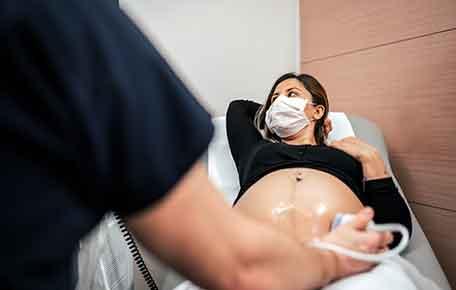Tetralogy of Fallot
Make an Appointment
Finding out your baby has tetralogy of Fallot can be difficult. This present-at-birth (congenital) heart defect means your baby needs surgery. That brings questions, fears, and decisions no parent is ever prepared for.
You don’t have to be. At UVA Health Children’s, our experts offer complete repair for tetralogy of Fallot. Our survival rate of 100% is higher than the national average. Our outcomes are one of the reasons why U.S. News & World Report named UVA Health Children’s the #1 children’s hospital in Virginia.
Tetralogy of Fallot Surgery at UVA Health Children's
Babies born with tetralogy of Fallot need surgery so their hearts can pump enough oxygen-rich blood to their bodies. We offer several types of surgery based on your baby’s health and needs.
Temporary Shunt Surgery
If your baby is not yet large enough for a complete repair or has additional medical problems, we can raise the oxygen in their blood with a temporary shunt surgery. We create a new path (shunt) so blood can go directly to your baby’s lungs to increase oxygen level.
Complete Tetralogy of Fallot Repair
Most children with tetralogy of Fallot need a complete repair when they are 3 to 4 months old. This surgery:
- Patches the hole in the wall between your child’s lower two heart chambers (ventricular septal defect)
- Relieves the blockage in your child’s narrowed pulmonary valve so more oxygen-poor blood can flow from the heart to the lungs
After this surgery, your child’s lower right heart chamber (ventricle) goes back to its normal size because it won’t have to work as hard to pump blood. Their oxygen level will be normal.
Pulmonary Valve Replacement
Sometimes, the tetralogy of Fallot repair causes the pulmonary valve to leak. Over time, this can enlarge the heart. Your child may need a pulmonary valve replacement in their teen or adult years to make their heart work better and make it easier to do physical activity.
In some cases, our cardiologists can replace the pulmonary valve without surgery. Instead, they use a tube (catheter) to reach the heart. The doctor places a catheter into a blood vessel in your child’s leg. Then, we feed a replacement valve through that catheter and place it in the heart. Your child only has to spend one night in the hospital after this procedure.
- Ongoing Care for LifeLearn About Our Adult Clinic
People born with a heart defect need lifelong care with a pediatric or adult congenital heart specialist. Arrhythmias or heart rhythm problems can happen after a complete repair. UVA Health has pioneered many heart rhythm treatments.
- High-Tech UltrasoundGet a Fetal Echocardiogram
Based on an ultrasound or genetic testing, your doctor may suspect your child has a heart defect. But we need a safe, high-tech fetal echocardiogram to know for sure. Then we can help you prepare for your baby’s birth and care after they’re born.
- Genetic TestingSee a Genetic Counselor
Does it run in the family? Get a clear picture of the genetics involved with your baby's heart defect. Our experienced genetic counselors can help you learn whether the condition runs in your family and what that means.


